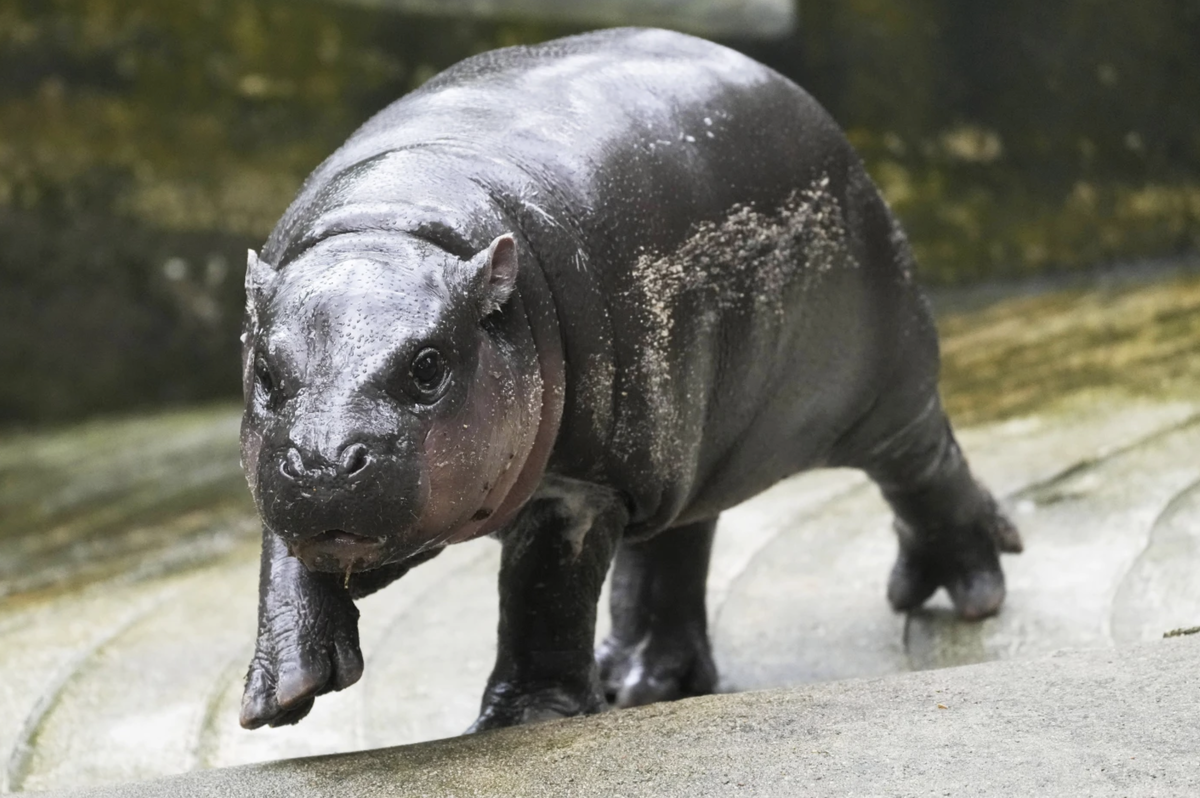“Elephants” sounds beautiful…

The elephant is an animal that evokes only positive emotions, affection, and respect in us from a very early age. Elephants seem like intelligent, calm, and noble giants, simply incapable of harming anyone. And those who have worked with elephants, in addition to these qualities, consider them the most emotional animals. The very word “elephant,” “sloooon,” has a kind and magical sound. Furthermore, in many cultures, elephants are symbols of happiness, home comfort, and peace.
The African elephant is the largest land mammal – second only to the giraffe in height, it surpasses it in impressive weight (the heaviest elephant recorded today weighed over 12 tons). Along with the Asian elephant, this animal belongs to the order Proboscidea . Elephant-like mammals ( Elephantidae ) appeared 16 million years ago, during the Middle Miocene. Three million years ago, the legendary mammoths appeared in Africa, some of which migrated to Northern Europe and eventually faded into history. Those animals that remained in Africa evolved, colonized new territories, and are now known as forest elephants ( Elephas antiquus ).
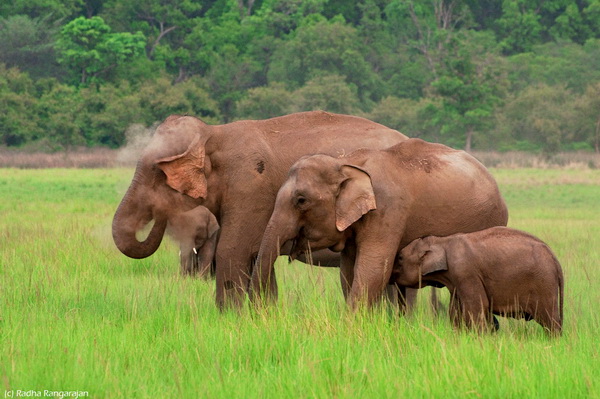
A difficult elephant childhood
Females up to 50 years old give birth to babies, and elephants’ pregnancies last almost two years—22 months , to be precise. The first month of life is difficult for elephant calves: not only is their trunk completely unresponsive, but sometimes their relationship with their mother can be far from ideal. Unlike the old cartoon, where a naive baby mammoth floats on an ice floe to his “only mother in the world,” real life is different: young female elephants can be aggressive and neglectful toward their baby. Therefore, a baby elephant is usually adopted by a more experienced female elephant, who then nurses her offspring—a process that continues for the first five years of the baby’s life. After birth, the babies are protected only by their mother’s belly for several days, so if danger threatens, the mother elephant simply scoops up the baby with her trunk and runs away. However, elephants have another defense strategy: they form a tight circle around their young, thus protecting the still-helpless infants from predatory attacks. When an elephant senses a threat, it trumpets its trunk, alerting its fellow elephants to the danger.
Baby elephants grow slowly: only 5-8 cm per year in the first three years, then rapidly gain 20-25 cm. Elephants reach adulthood, meaning they have reached their maximum size, at 25 years of age, but can have offspring much earlier: females at 10 years of age, and males at 10 to 20. Elephants live about as long as humans – up to 70 years (the record age is 86 years).
Relationships in elephant society
Elephant herds are dominated by a matriarchy : an older female elephant leads 15 to 30 females and her calves. Population growth is supported by young elephants, who form a separate herd that obediently follow their “fairer half” everywhere. Older elephants, however, often distance themselves from their families and lead solitary lives. All elephants in a herd are closely related; in the vast expanses of Africa, these animals often gather in huge herds of up to several thousand.
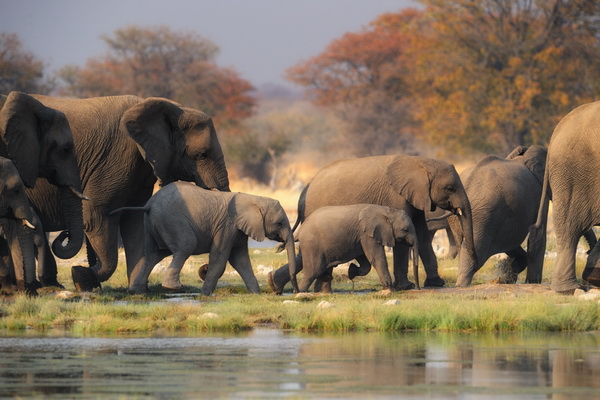
Social relationships and maintaining contact with herd members are extremely important to elephants , so they greet each other by wrapping their trunks around each other. This organ effectively acts as a hand for elephants – from a very young age, calves are accustomed to holding their mother’s trunk. Adult elephants will never pass by a baby sprawled in the mud – they’ll extend their trunk and help it get back on its feet.
The character and thinking of elephants
No one doubts elephants’ intelligence . Their enormous brains weigh up to 6 kg, and their memory is impeccable. Elephants even remember the pitch of sounds they’re trained to play, so one can confidently speak of their musical talent. Elephants remember people who have been kind or cruel to them for their entire lives, and they also remember the locations where important events have occurred. Elephants can laugh, have fun, and display emotions—both positive and sad (they deeply grieve the loss of herd members).
Tame elephants often save people’s lives , for example, during floods, but in captivity they can become aggressive and even vengeful—this applies more to males. Females, however, enjoy human interaction and readily adopt some human traits, such as cunning. Of course, it’s a bit of a stretch, but nevertheless: elephants are treated for colds with heated alcoholic drinks, and the animals enjoy them so much that they sometimes feign certain symptoms of illness to obtain their favorite treat. Another hobby among tamed elephants is painting: they very thoughtfully move a brush across an easel, clearly enjoying it, and stubbornly refuse to do anything else until they tire.
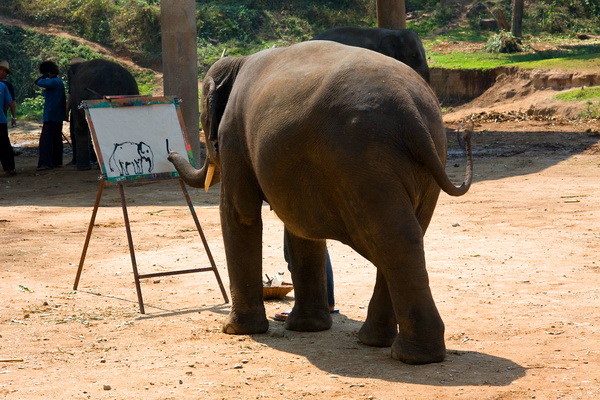
Distinctive features of elephants
The elephant’s most distinctive feature is, of course, the trunk . The trunk is essentially an elongated nose and upper lip combined. It often reaches two meters in length and weighs up to 140 kg. Like all other animals, elephants use their trunks to detect scents and also to collect water for drinking or splashing onto their backs. Numerous muscles are involved in this curious, flexible, and powerful organ, which ends in one (in the Indian elephant) or two (in the African elephant) “fingers.” These tips of the trunk are extremely sensitive and allow the elephant not only to pluck leaves and branches, pick berries from the ground, but even to pick up a small pin!
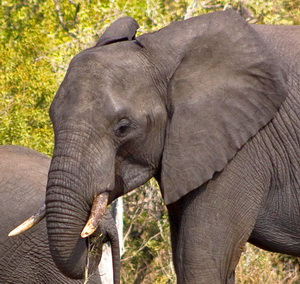
The large ears that allowed animators to create the fairy tale of Dumbo the flying elephant are actually needed for thermoregulation. Thanks to thin, sensitive skin, under which lies a dense network of blood vessels, they effectively cool the animal in hot weather. Furthermore, the ears are unique in their structure and act as an elephant’s “passport,” much like a human’s fingerprints. They can also signal that an elephant has sensed danger and shares its suspicions with other members of the herd. Males also have scent glands behind their ears.
Elephants’ skin is indeed thick —up to 2.5 cm—and its typical color is gray, although lighter or darker shades are also common. Baby elephants are born covered in short, downy fur, which disappears as they mature—evidently a result of their ancestral ancestors, the woolly mammoths.
Elephants are both lucky and unlucky when it comes to their teeth : they replace them as many as six times during their lives! Chewing plant matter, elephants wear down their teeth, and when their last set of teeth becomes unusable in old age, like all herbivores who escaped predators, wild elephants die of starvation. Like humans, tooth replacement can be difficult, so elephants help their teeth fall out by choosing harder branches for their meals. However, elephants’ tusks (upper incisors) grow throughout their lives, sometimes reaching 2.5 meters and weighing up to 50 kg. They not only serve as a status symbol and adornment, like antlers on deer, but also help elephants dig up tree roots and dig. Elephants once had enormous tusks, like those of extinct mammoths, but animals with the most impressive incisors were hunted for a long time, so today’s elephants are much more modestly “decorated” with tusks. It’s also interesting that some elephants are right-handed and left-handed. Depending on which tusk is shorter (worn down), it determines which side is more comfortable for the elephant to work with—therefore, that side is the animal’s preferred side.

Ed Fateev, specially for Natureworld.ru
This article uses photographs by the following authors (in order of publication): Nara Simhan, Radha Rangarajan, Cybjorg, T Dornbusch, Nicolas Raymond, Cory Catts (GatorCatts).


